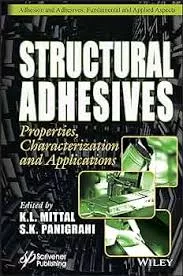Scientists Study Use of MMA for Structural Bonding in Ships
A team of researchers has analyzed the potential of using methyl methacrylate to bond together the structural elements of a boat.

Credit for top image: Image courtesy of Ultima_Gaina via www.gettyimages.com.
A team of researchers has analyzed the potential of using methyl methacrylate (MMA) to bond together the structural elements of a boat. The research is part of the INTERREG 2Seas Mers Zeeën research program, a European Territorial Cooperation program that covers England, France, the Netherlands, and Belgium (Flanders) with the goal of developing a 2 Seas area that protects natural resources and promotes the green economy.
Traditionally, mechanical fasteners are used to connect ship components, which add weight and limit the ability to take advantage of new design approaches that use composite materials. While researchers have explored the possibility of using epoxies to bond together different parts of a boat, the material was deemed too brittle as it can crack over time. MMA does not provide the same strength as epoxy, however, it absorbs more energy, and the research indicated that MMA could prove suitable for replacing mechanical fasteners, resulting in lighter and more efficient designs. “MMA is very flexible and can deform much more than brittle epoxy-based adhesives,” said Mohamed Nasr Saleh, Ph.D., thermoplastic composites lead at the Advanced Materials Research Center at the Technology Innovation Institute (TII) in the United Arab Emirates. Saleh was one of the lead researchers in the study, which also included collaborators from Delft University of Technology in the Netherlands and Aarhus University in Denmark.
Today, boat designers use mechanical fasteners to connect the superstructure of a ship, which refers to the top body of the vessel, to the rest of the ship. In the long run, the broader use of MMA could pave the way for the wider adoption of composite superstructures, which will enable ship designers to reduce top weight and improve stability. Saleh added, “Using adhesives will help eliminate the weight of those mechanical fasteners.” Early analysis predicts this could reduce weight by 10%, improve fuel efficiency by 1-7%, reduce harmful emissions, and increase ship stability.
A Promising Alternative
While MMA is not new, there is little research around its resilience under different kinds of stress. The new research focuses on how the material behaved under different types of mode I fractures when two bonded pieces peel apart. Saleh explained, “Mode I is always the weakest when it comes to strength.”
Although epoxies tend to have a stronger bond, the researchers found that the MMA did better at deforming without breaking. “We were trying to see if using this adhesive that was already a product in the market could replace something like epoxies in maritime use cases,” said Saleh. Another advantage is that MMA bonding also does not require any surface pretreatment, making it easier to bond composites with metals, plastics, and other materials. Epoxies and other adhesives often require chemical and mechanical treatments to activate the surface for the bonding process.
New Guidelines
Despite the potential of MMA, there are guidelines for how adhesives can be used in marine applications, especially for structural elements, which are the elements that carry the load. Current uses of adhesives are limited to attaching pieces to the structure or gluing interior pieces together that do not involve heavy loads and are not critical for the ship's integrity.
The researchers wanted to test if it would be possible to safely bond the superstructure to the hull using MMA—an application that would require that the adhesive carry the load; otherwise, the whole top of the boat may move relative to the hull. Research found that adhesive bonding was feasible, especially when the loading conditions were below the maximum stresses. In addition, they analyzed its long-term behavior under marine-environment conditions, where the structure was exposed to seawater and moisture, and found that MMA held up better than epoxy over time.
The most crucial metric to quantify was the maximum deformation that the joint could suffer before breaking. The researchers found that MMA joints could experience a strain of 35%, while epoxy could only get to 5% before breaking. However, the epoxy was better at carrying stress. The upshot was that MMA was half as strong but could deform significantly more before breaking, which allows it to absorb substantially more energy.
The researchers also analyzed different methods of tearing apart two attached pieces, namely an approach called compact tension (CT), which analyzes how a bond might fracture in the middle of the adhesive, and double cantilever beam (DCB) testing, which analyzes how a bond might fracture at the interface between one piece and the glue. They found that it required four times more energy for a crack to grow with CT and 10 times more with DCB testing. The MMA bond was so strong that the metal started to bend before the adhesion broke, which was not the case with the epoxy.
“It takes years before the regulators sign off on a new approach like this. You must consider all the loading and service conditions for a ship's full lifespan, which is around 20-25 years before it can be certified for service,” Saleh explained. He said that he expects it to take another 5-10 years before the new approach is used commercially.
Find the research paper at https://www.sciencedirect.com/science/article/pii/S0143749622000409#.
Learn more about Technology Innovation Institute www.tii.ae. Additional information about Advanced Materials Research Center is available at https://www.tii.ae/advanced-materials.
Looking for a reprint of this article?
From high-res PDFs to custom plaques, order your copy today!



